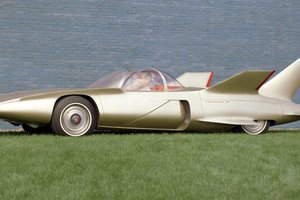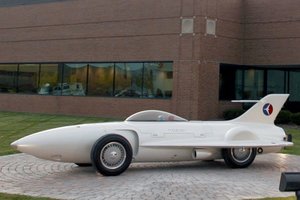A car of futures past, the 1950 GM Firebird Concept car still strikes the imagination. It’s not only beautiful to look at, but testifies to a thoughtful paradox of retro and the future.
It comes from a time when car manufacturers could bring to life the concepts they dreamed of. The Firebird concepts were created to demonstrate GM’s leading role in the automotive industry with its innovation in the 1950s. The prototypes were never designed to go into production, but to play an important role in song, film and dance, and as a key marketing element.
Inspired by the aeronautics sector
The Firebirds were clearly inspired by aircraft design: in the 1950s, gas turbines were introduced in aircraft for the first time. The huge wings and tail fins also mimic those seen on the fighter planes at the time.
The first Firebirds each had a theoretical top speed of 322 km/h (200 mph). It is also said that GM told people that these cars could be autonomous if "guidance wires" were installed on the roads. The 1953 model had the first gas turbine engine to ever built and tested in the U.S.
Harley Earl, GM's styling vice president of the time, designed the car and worked with Charles McCuen, GM's general manager of research, who oversaw the engine’s development. The engine was said to be capable of 370 horsepower and spun at a maximum of 13,000 rpm.
Air-conditioned cars with independent suspension
The 1956 Firebird II featured such innovations as all-wheel independent suspension with automatic load-levelling, four-wheel disc brakes, electric gear selection, a titanium body, a magnetic ignition key, and individually controlled air conditioning. This Firebird also took on a more practical four-door family sedan design that is more practical than its single-seater predecessor.
The third and final prototype of the Firebird was a two-seater coupe with a double-bubble canopy. It also had cruise control, anti-lock brakes and air conditioning, all still rare at the time.
It’s clear that General Motors put the first autonomous cars on the market and continues to lead the way in electric vehicles.














